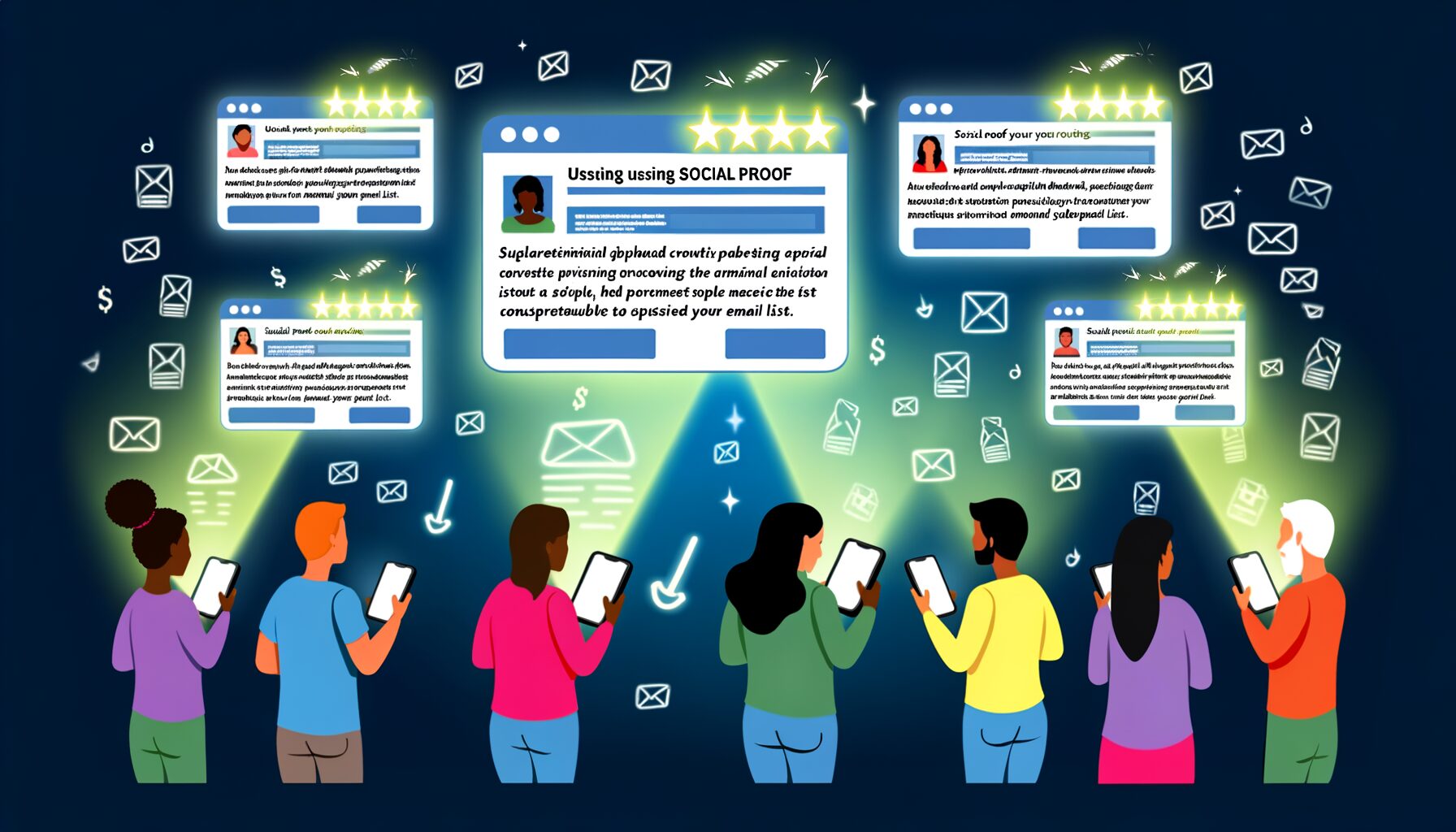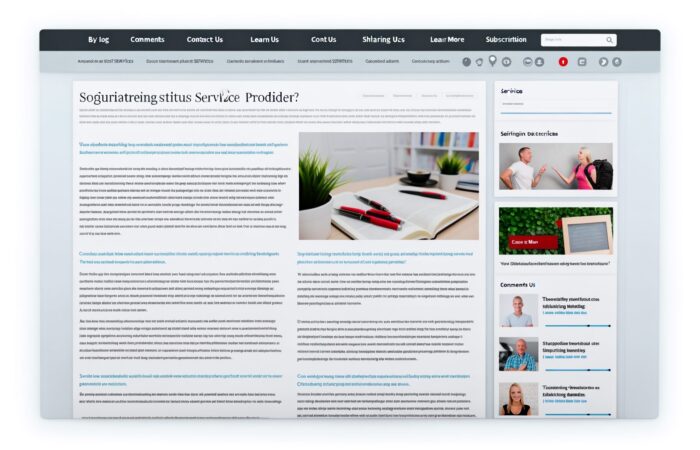Welcome to the Exciting World of Conversion Rate Optimization! If you’re intrigued by improving the performance of your website or enhancing the effectiveness of your digital strategies, you’ve probably heard of Conversion Rate Optimization (CRO). Not familiar with the term yet? Worry not! We’ll explore what it really means, why it’s crucial, and how it can help your online presence really shine.
So, what exactly is Conversion Rate Optimization? In simple terms, CRO is the systematic process of increasing the percentage of website visitors who take a desired action — be that filling out a form, becoming customers, or otherwise. The goal of CRO is to make your website more persuasive and effective at helping visitors accomplish their goals as well as yours.
But why is CRO so significant? Think about this: you wouldn’t want to pour water into a leaky bucket, right? Similarly, attracting loads of visitors won’t benefit your business if they aren’t converting into customers or completing other valuable actions on your site. Thus, optimizing for better conversion rates ensures that your marketing efforts reap tangible rewards.
Unlocking the Basics: Where to Begin
Getting started with CRO can seem daunting, but let’s break it down. A holistic approach to CRO generally includes looking at various elements:
- Data Analysis: Everything starts with data. Analyzing where visitors drop off and where they spend the most time helps you understand user behavior.
- User Testing: Direct feedback from real users can show you what’s working and what’s not. Assume less, ask more!
- Hypothesis Development: Based on data and user insights, develop hypotheses on what changes might enhance user experience and conversion rates.
These initial steps are crucial in setting a strong foundation for your CRO efforts. The key here is to be led by facts, not just intuition.
CRO: A Key to Successful Digital Presence
Remember, CRO isn’t just a cherry-on-top for your marketing activities; it’s a fundamental layer that helps everything else work better. By optimizing conversion rates, you ensure that your SEO, social media, and other marketing investments have the best shot at success. Enhancing user experience or tweaking the design might just be what you need to boost those conversions.
Think of CRO as continuous improvement philosophy for your website—with an abundance of testing and efficient use of marketing resources, growth is not just possible, it’s inevitable!
And here’s the heartening part: you don’t have to go at it alone! There’s a whole community of marketers and tools to support you. So, ready to dive in? Great, because optimizing your conversion rate might just be the most rewarding project you undertake this year. It not only firms up your bottom line but also deepens the connection with your visitors. A win-win, right?
That’s a brief round-up on Conversion Rate Optimization. Intrigued? Stay tuned, explore more, and let’s turn that visitor traffic into a parade of engaged customers! Looking at improving those numbers has never been more exciting.
Leveraging AI and Machine Learning for Predictive Analytics
So, let’s dive into how the cutting edge of technology impacts conversion rate optimization. Imagine having a crystal ball that could predict not just the future, but the moves your customers are likely to make next. That’s almost what using AI and machine learning for predictive analytics feels like, in the world of digital marketing!
First, the basics: predictive analytics uses data, statistical algorithms, and machine learning techniques to identify the likelihood of future outcomes based on historical data. It’s like weather forecasting, but for customer behavior. By understanding patterns and forecasts, marketers can better navigate the consumer landscape.
How Does It Work?
- Data Collection: Everything starts with collecting tons of data — from how users interact with your site, to purchase histories, and beyond.
- Data Analysis: Machine learning algorithms then sift through this data to find patterns and predict outcomes. This could be anything from predicting which new products customers might like, to forecasting sales trends.
- Implementation: Finally, you apply these insights in real time to tweak your marketing strategies and website designs.
Predictive analytics really shines when personalized. Imagine this: your website could recommend products just like a seasoned salesperson would by guessing what the customers might like based on their browsing history and purchase patterns. Except, of course, it’s a whole lot faster and objectively data-driven.
Here are some cool, practical applications to consider:
- Email Marketing Campaigns: Use predictive models to customize email content to suit individual customer preferences and increase open rates.
- Inventory Management: Predict future product demands to optimize stock levels and reduce overstock or stockouts.
- Dynamic Pricing: Adjust prices in real time using a predictive analysis to capitalize on current market trends and maximize profits.
The benefit? All these efforts streamline operations and enhance customer engagement and satisfaction, leading to better conversions and higher sales.
However, with great power comes great responsibility. Ethical concerns around privacy and data protection play a paramount role. It’s crucial to use this technology responsibly and with clear consent from users. Transparency about data usage stands as a pillar of trustworthy customer relationships.
To get started, you don’t necessarily need a tech whiz by your side (although it doesn’t hurt). Many modern marketing platforms integrate AI tools making it quite accessible for those new to predictive analytics. Plus, there’s always room to learn more, whether through online courses or partnership with data analysts.
The takeaway: Leveraging AI and machine learning isn’t just about staying current with technology; it’s about actively adapting to, and predicting, customer needs to provide uniquely personal and proactive services. So why not give it a whirl and see what insights come to light? Something tells me you won’t be disappointed!
So, turning the spotlight on personalization techniques, how exactly can they elevate your brand’s engagement and spike up those conversion stats? Personalizing your customer’s experience is like crafting a bespoke suit. It’s tailored to fit perfectly, making them feel special and valued, and that’s exactly what nudges them closer to a purchase decision.
Understanding the Impact of Personalization
At its core, personalization is all about data – the more you know about your customers, the more effectively you can tailor their experiences. By analyzing data points such as browsing behavior, previous purchases, and even social interactions, brands can create unique user profiles. Armed with this info, you can ensure that each interaction is as relevant and engaging as possible. Studies show that a whopping 80% of shoppers are more likely to buy from a company that offers personalized experiences. Now, that’s a number too big to ignore!
Strategies to Customize User Experiences
Here are some tried and tested personalization strategies that can help you get a foot in the right door:
- Recommendation Engines: Ever noticed how Netflix suggests shows that often hit your sweet spot? That’s a recommendation engine in action! Using similar technology on your website can help suggest products, articles, or services to your users, based on their past interactions.
- Personalized Emails: This one’s a classic! Sending out emails that address customers by name and tailoring the content based on their preferences can boost open rates and drive considerable conversions.
- Customized Homepage Displays: Imagine logging into a website and it feels like it’s made just for you. Segmenting your homepage based on visitor data (new visitor, returning, came through a specific campign) can drastically improve user experience and engagement.
Real-Life Success Stories
Let’s take the theory to the trenches with some inspirational examples from the business world:
Spotify: With its ‘Made for You’ playlists, Spotify nails personalization by analyzing your music preferences and listening habits to build playlists that feel personally curated just for you.
Amazon: It’s not just about ‘suggested for you’, with Amazon. They personalize their user’s experience from the moment one lands on their webpage which often results in higher till rates.
The paramount importance of personalization in enhancing user engagement cannot be overstated. It’s all about making the customer feel like they’re your number one. By applying these strategies, you’re not just boosting conversions; you’re building relationships and fostering loyalty.
And remember, while technology can handle quite a bit of heavylifting in personalization, the human touch will always have its unique charm. So keep tweaking, adjusting, and personalizing, because when it comes to conversion rate optimization, a little customization goes a long way in leaving a lasting impact!
Implementing Chatbots for Real-Time Customer Interaction
Ever landed on a website and had a friendly little chat window pop up, offering help? That’s a chatbot in action! These digital assistants are not just great at breaking the ice but are incredibly efficient at enhancing customer service and driving engagement. Intrigued? Let’s dive deeper into how chatbots are revolutionizing online interactions and might just be what your website needs to up its conversion game.
Why chatbots, you ask? First off, they’re available 24/7, which means your business is too, metaphorically speaking. These helpers are like the diligent store clerk who never sleeps, ensuring that any visitor on your site gets immediate attention, any time of the day. Now that’s impressive!
How They Work
From a technical standpoint, chatbots utilize a mix of pre-set scripts and sometimes more sophisticated machine learning algorithms to understand and respond to user inquiries. Whether it’s answering basic questions about your products, guiding browsers on how to make a purchase, or providing information on shipping—these bots handle it all without breaking a sweat.
Launching Your First Chatbot
The process might sound a bit techy, but it’s pretty straight-forward. Here’s a simple breakdown:
- Identify the tasks you want your chatbot to handle. Start simple. Customer inquiries? Scheduling? Both?
- Choose the right platform. There are numerous chatbot-building platforms out there that can help you design your bot without needing to code from scratch.
- Get creative with scripts. Inject your brand’s voice into the conversation. Why not make your bot a bit playful or witty? Remember, the goal is also to make your visitors smile.
- Test relentlessly. Before going live, ensure your chatbot handles inquiries effectively. This might involve a bit of trial and error, but it is crucial.
- Constantly evolve. Launching your bot is just the beginning. As you gather more chat data, optimize its responses for even better customer engagement.
Battle-tested Perks of Chatbots:
- Instant response: Quick replies mean happy customers.
- Never miss a lead: Even if it’s after hours, your chatbot is there to engage potential customers.
- Omnipresent customer service: Resolve issues and answer questions round the clock without the need for human intervention. This can significantly reduce overhead costs.
- Personalized experience: With advancements in AI, some chatbots can offer highly personalized recommendations based on customer interactions.
Incorporating a chatbot may seem like a small tweak, but it can lead to big improvements in customer experience and operational efficiency. Imagine reducing the load on your customer service team and simultaneously boosting customer satisfaction. It’s a win-win! Ready to deploy one?
Engagement Starts Here! The era of digital transformation is upon us; chatbots are just the beginning. By letting a bot handle routine tasks, your business not only keeps up with contemporary tech trends but also frees up your team to tackle more complex queries. Dive into the world of chatbots, and you might find your website not just speaking but truly communicating with your visitors ever so effectively!
Optimizing Website Design for Enhanced User Experience
Alright, let’s dive into one of the crucial gears in the wheel of Conversion Rate Optimization – Website Design. Ever walked into a cluttered store? It’s overwhelming, right? The same goes for websites. Your website’s design is the first handshake with your users, and we all know first impressions stick! So, how do you ensure it hits the mark? By optimizing for the best possible user experience (UX), of course!
Think about it this way. A seamless and intuitive website design doesn’t just make your site look pretty; it makes it work effectively. Users should be able to find what they want quickly and without confusion. Your goal is to escort them smoothly from the landing page to checkout or conversion. Navigational apps don’t make you swim through rivers to reach your destination, right? Similarly, your site’s navigation should be straightforward and user-friendly.
-
- Keep it Simple: Avoid getting too artistic by keeping the layout simple and the content accessible. Fancy fonts and exotic color schemes are great, but if they can’t find the ‘buy’ button, you lose!
- Responsive Design: People aren’t just browsing on desktops anymore. Make sure your site looks good on all devices – phones, tablets, phablets, you name it!
- Load Speed: Ever left a site because it took just a tad too long to load? We all have. Optimize image sizes and streamline your coding to keep your site zippy.
But aesthetic isn’t the only axis your website design should revolve around. Here’s what else you can use:
-
-
- User-centric Approach: Start with understanding your user’s needs. Tools like user personas and user journey maps can be incredibly helpful. When you know who your users are and what they want, you can craft a site that truly speaks to them.
- Visual Hierarchy: Guide your visitors through the site with the clever use of sizing, color, and contrast. Highlight what’s important, and keep the rest subdued. It leads the eye and makes the experience logical and flowing.
- Accessibility Matters: Beyond looking good and functioning well, your site should be accessible to everyone, including those with disabilities. Use alt texts for images, accessible navigation, and adequate contrasts for readability. Making your site inclusive not only increases your user base but also enhances your brand reputation.
-
Incorporating these elements into your website design does more than just beautify the space. It ensures every visitor is guided clearly and smoothly through their buying journey, vastly improving your conversion rates. Efficient design captures and sustains attention, which is pretty much the coin of the realm in the digital marketplace.
Remember, in the world crowd of websites, being another face will not do you any favors. Aim for a website design that positions you not just as another option but as the best, simplest, and most enjoyable option! By prioritizing excellent UX, your site will not only look good, but it’ll also perform splendidly. More clicks, fewer bounces, ecstatic users—what’s not to love?
The Role of A/B Testing in Refining Marketing Strategies
So, you’ve been hearing about A/B testing, have you? Or maybe it’s split testing, as some like to call it. Either way, it sounds pretty techy and fancy, doesn’t it? Worry not, it’s actually not as complicated as it seems, and trust me, it’s something you’ll want to get your hands around if you’re serious about stepping up your marketing game.
Let’s break it down together: imagine you’re deciding between two calls-to-action (CTA) for your website. Rather than tossing a coin, you let your audience decide which one they prefer, systematically and statistically. Bravo! You’ve just embarked on your first A/B test.
The brilliance of A/B testing lies in its simplicity. You split your audience into two groups and show each group a different version of essentially the same thing, whether it’s a webpage, email, or an app screen. Then, you measure which version performs better based on your specified conversion goals, like clicks, form submissions, or purchases.
Why is A/B Testing a Game Changer?
- Data-Driven Decisions: Instead of relying on gut instinct, A/B testing provides hard facts to support your marketing choices.
- Improved User Engagement: By testing different elements, you can discover what resonates best with your audience, leading to higher engagement and satisfaction.
- Increased Conversion Rates: Little tweaks based on test results can dramatically increase the effectiveness of your pages.
Now, I get that the idea of conducting experiments on your website or ads might seem a tad daunting. But fear not! The beauty of A/B testing is it can be as simple or complex as your comfort level and resources allow. Begin with something small—like changing the color of a button—and then move on to bigger elements like page layouts or entire email campaigns.
Quick tips for A/B testing:
- Set Clear Objectives: Be specific about what you want to achieve. Whether it’s increasing sign-ups, downloads, or sales, having a clear goal in mind helps measurably.
- Test One Variable at a Time: This keeps results clear and actionable. If you change multiple aspects at once, you won’t know which element influenced the outcome.
- Give It Time: Allow the test to run long enough to collect meaningful data; sometimes what seems like a trend can be just a fluke.
- Use Tools: Utilize A/B testing tools that can help create, manage, and measure your experiments efficiently.
As you dive deeper into the potential of A/B testing, your marketing strategy begins to evolve based on what’s proven to work, rather than what you assume might work. It becomes a continuous cycle of testing, learning, and optimizing – all aiming towards an upswing in conversions and engagement.
By implementing continuous meaningful A/B tests, your brand stays relevant, agile, and, importantly, much more likely to grasp your audience’s attention in the vast ocean that is today’s digital landscape!
Social Proof and Customer Reviews: Building Trust Online
Okay, so let’s chat about something every online shopper looks for but many businesses often underestimate: social proof and customer reviews. Picture this: you’re online, eyeing that trendy coffee maker that’s supposedly all the rage. But here’s the kicker – will you click ‘buy’ if you see it has hundreds of rave reviews or if it’s just sitting there with no emotional applause whatsoever? Exactly, reviews matter a lot.
Firstly, it’s crucial to think about why social proof is such a powerhouse in the digital era. Simply put, social proof comes from psychology. It’s the concept where people conform to the actions of others under the assumption those actions reflect the correct behavior. When this power is harnessed properly online, it not only garners trust, but it can significantly boost your conversion rates. How powerful is that for a little word-of-mouth?
-
-
- User Reviews and Ratings: These are the heartfelt (or sometimes harsh) judgments by users who’ve already purchased your product or service. And yes, they matter. A lot. A study found that a whopping 91% of young consumers trust online reviews as much as personal recommendations.
- Testimonials: Slightly different from user reviews, testimonials are usually cherry-picked for their gleaming positivity. They’re most effective on your homepage or product pages as an uplifting nod from satisfied customers.
- Celebrity Endorsements or Influencer Shoutouts: Getting someone well-known to endorse your product can be a goldmine for boosting credibility quickly. Just make sure their audience aligns with your target market!
- Media Mentions: Earned media or being mentioned in a well-recognized publication serves not only as a pat on the back but also elevates your brand integrity in the eyes of web meanderers.
-
But here’s the twist in the plot – merely having social proof isn’t enough. The quality of your reviews and how you present them can turn the tides in your favor dramatically. Think about format – are your reviews easy to read? Do they give essential information at a glance? Enhancing readability and integrating star ratings are just tips off the iceberg.
Plus, always remember the little juggernaut – negative reviews. Counterintuitive, right? But stay with me here. An occasional not-so-shiny review adds authenticity to your product and can paradoxically increase trust! Customers aren’t looking for perfection; they’re seeking honesty. However, dealing swiftly and politely with negative feedback not only saves face but shows potential customers that you value customer satisfaction, further boosting your credibility online.
Real World Success with Social Proof
To wrap things up nicely, let’s throw in some real-world magic. Take, for example, companies like Amazon and TripAdvisor who’ve built empires partially through heaps of user-generated reviews. These allow potential buyers to see real opinions and make informed decisions, visibly multiplying engagements and conversions. Now, that’s utilizing social proof to the fullest!
To sum up, integrating robust social proof strategies into your marketing is not just important, it’s critical. Leveraging user reviews, testimonials, and media mentions in an authentic manner will ensure your online trustworthiness soars, undoubtedly leading to enhanced customer conversions. So why not give your visitors countless reasons to hit that tempting ‘buy’ button?











No Comment! Be the first one.